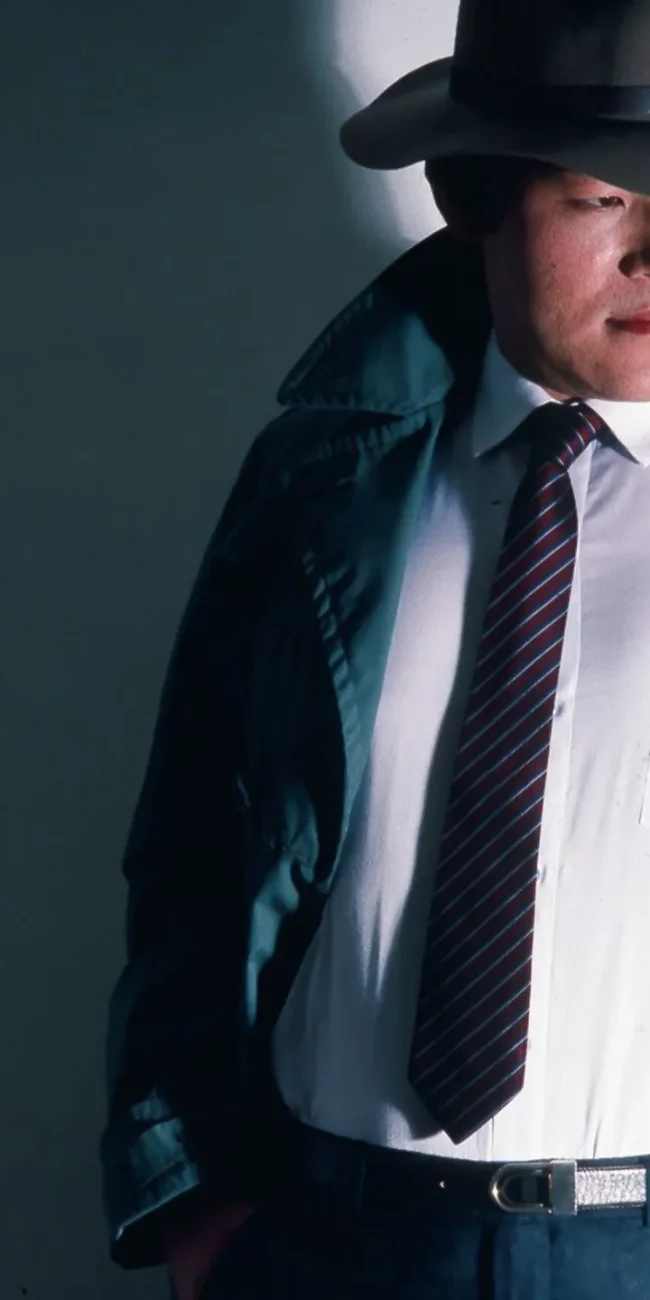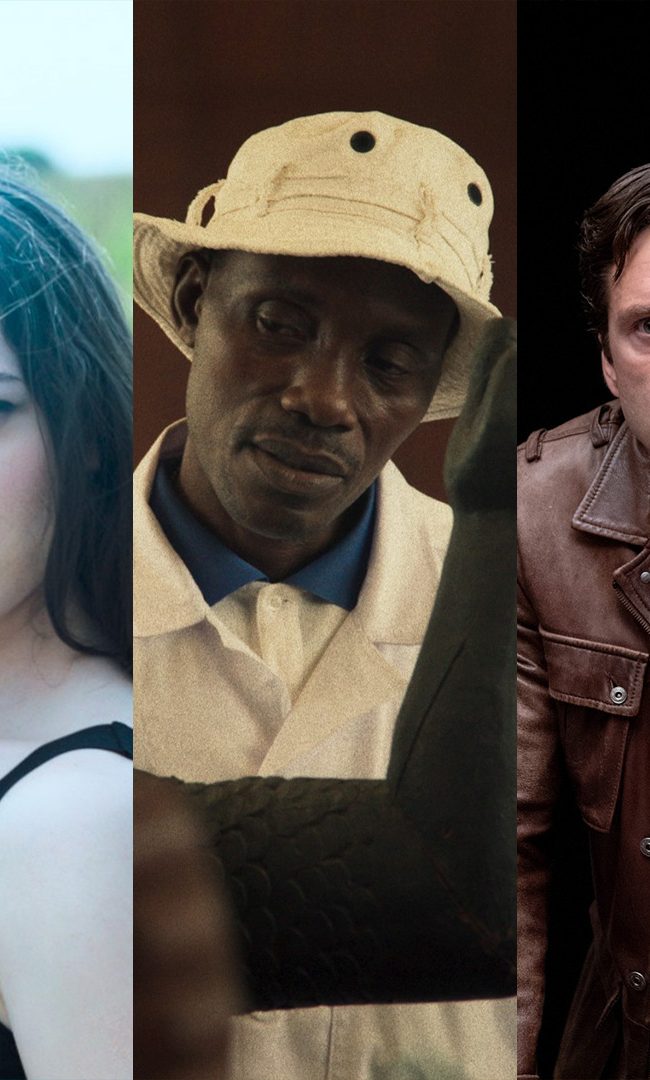A Conversation with Jessica Oreck (ONE MAN DIES A MILLION TIMES)
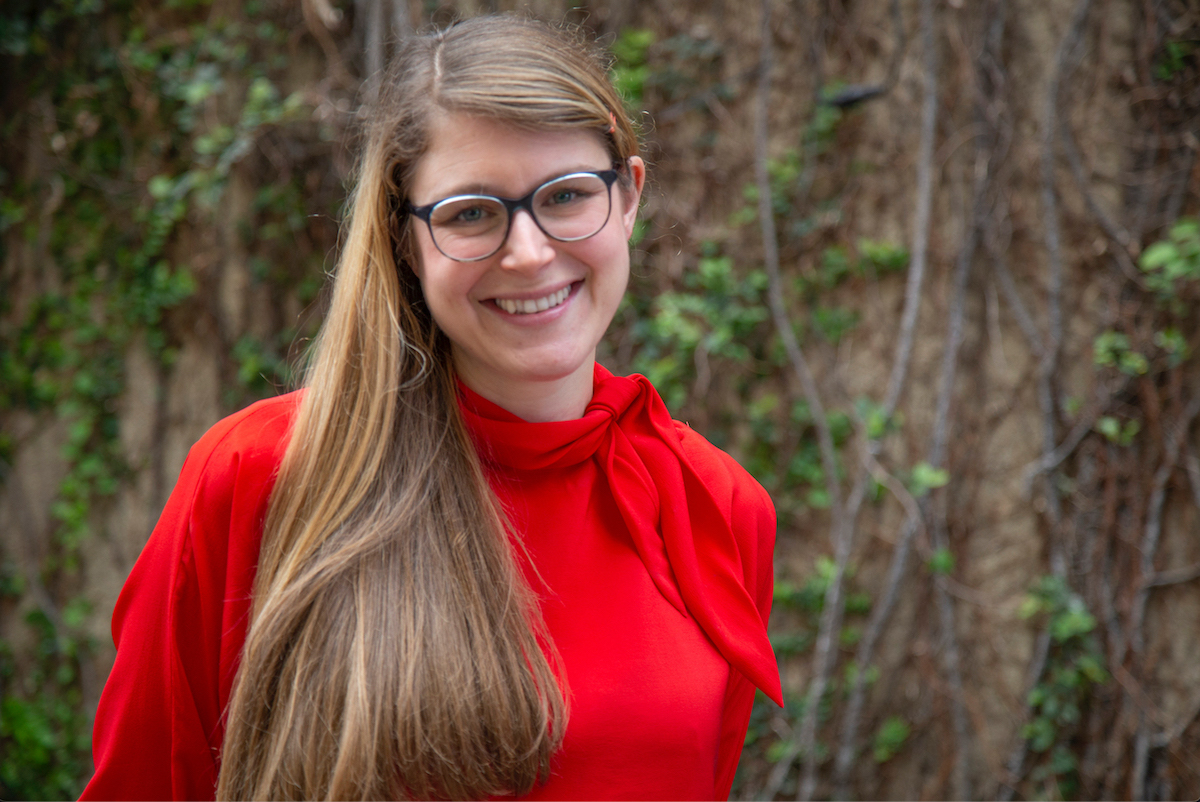
I met with director Jessica Oreck at the 2019 SXSW Film Festival, on Sunday, March 10, to discuss her newest film, the narrative feature One Man Dies a Million Times (which I also reviewed). A haunting dramatization of the Siege of Leningrad, set in the N.I.Vavilov Institute of Plant Genetic Resources, the movie nevertheless takes place in our own present (or the “near future,” as an opening title card declares), a cinematic device which serves to make the tragedy more immediate. The on-location sites – many of them crumbling – in St. Petersburg, Russia, however, lend an almost timeless air to the proceedings, as the events swirl through our consciousness in gorgeous black and white. Here is a condensed digest of our conversation, edited for length and clarity.
Hammer to Nail: Jessica, could you start off by telling me about your production company, Myriapod Productions, and your focus on ethnobiology?
Jessica Oreck: Sure. I knew I wanted to make films about nature since I was really little. I grew up without TV, so I had never seen a nature program until I turned 14 and I was in high school. In my high-school biology class, they showed David Attenborough’s The Private Life of Plants and I was like, “Oh my God, this is what I want to do for the rest of my life.” So, I studied filmmaking and biology in school. And then I started working at the Museum of Natural History in New York and I realized that what actually interested me was less these films about nature than the way we look at nature as human beings. And so I started focusing on ethnobiology, which is the way that cultures interact with the natural world. And Myriapod was really just a way for me to make films without having to put my name on everything. I don’t really like to be the center of attention, so Myriapod is…it’s just me and sometimes I have an assistant, sometimes I don’t, but it’s just a way for me to label things.
HtN: So, I’m going to call this an interview with Myriapod Productions as opposed to with Jessica Oreck, is that okay?
JO: (laughs) Yeah, sure!
HtN: (laughs) Excellent. Did you make up that word or is it just a word I don’t know?
JO: Myriapoda is the family of millipedes and centipedes. And I for many years had a pet millipede that was the love of my life.
HtN: Did it return the love? Are millipedes capable of returning the love?
JO: (laughs) She was a good snuggler. But who knows? I don’t think she knew me apart from anybody else. But she liked the warmth…
HtN: Exactly! I was going to say that it was because you generated warmth. That’s how I often feel about ferrets, although I’m sure ferret owners would disagree, but I never sense that they entirely engage with you the way cats and dogs do. You’re just a source of warmth.
JO: (laughs) Yeah. I’m going start with arthropods next…not that ferrets are arthropods, but…
HtN: Yeah! (laughs) So, what drew you to this particular subject and why make a film about the Leningrad blockade shot in present day Saint Petersburg?
JO: So, for me those are two pretty separate questions. In 2010, I was in Russia making my last film, The Vanquishing of the Witch Baba Yaga, and we were just walking through St. Isaac’s Square [in St. Petersburg] and our Line Producer said, “Oh, that, over there, is the world’s first seed bank.” And of course I was intrigued, since I had also studied botany. So I wanted to know about that. And the more I read about it, the more fascinated I was. The man that started it, this guy Nikolai Vavilov, was so prescient and far ahead of his time. Before we even understood genetics, he realized that we were losing genetic diversity and started collecting seeds from around the globe. He really set the precedent for a whole new type of science in Russia and he was fascinating.
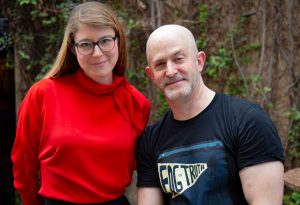
Filmmaker Jessica Oreck and our Chris Reed
For those that don’t know, the Siege of Leningrad happened during World War II, when the Nazis surrounded Leningrad, which is now called Saint Petersburg. And there were 900 days where there was no food in or out of the city, and 1 in every 4 people starved to death. So, it’s one of the worst sieges in history. Now all of the seeds are frozen in cryogenic slumber, but back then, in order to keep the seeds viable, you had to plant them, grow the food, harvest the food, save the seeds, replant them the next year. So, the scientists were growing food in the middle of Saint Petersburg and choosing not to eat it because they believed so deeply that what they were doing was going to shape and save the future of Russia and the rest of humankind.
So that story is remarkable in and of itself. What an incredible thing! It seems that as Americans, today, we can’t even get people to stop smoking…and they know that smoking will kill them within their lifetimes. And the idea that somebody would sacrifice their life for a future that they can’t even possibly imagine, that’s so far down the line, so many generations away…it’s just remarkable. Maybe I just don’t know people in extreme enough environments, but it seems very rare. So that’s where the story came from.
But then, also, I weirdly spend a lot of time around very young people, just by nature of where I live right now. And for them to watch a movie about World War II is sort of the same as watching a movie about…Star Wars. Their sense of reality is so far removed from the costumes and the lifestyle and just all of the things that make a period piece believable to somebody who can imagine that time. And so I think for them it really feels like ancient history. It’s the same as 16th-century France and I wanted something that was more relevant because the seed bank is still relevant.
The seed bank still exists in the middle of Saint Petersburg and it’s still an issue. We are losing genetic diversity faster than we can classify it. And so this idea that I was going to set the film in a time where it was no longer applicable felt wrong to me because it is still applicable, and the story still exists and the seed bank is still there and it still has to be fought for. It’s still always on the verge of bankruptcy and 90% of those seeds exist nowhere else in the world, because they started collecting so far before we understood that we were losing genetic diversity. So, for me, it’s really about bringing the story into a living, breathing, contemporary place that is relatable to people of all ages.
HtN: Well, that makes sense. Now, I love it how it looks, and I think Sean Price Williams, your cinematographer, did a great job. But given the fact that you wanted to make it feel contemporary to our time, why the choice to do this in black and white?
JO: For me, it was really about the slippage of time that happens. I didn’t want it to be 2017, 2018, 2019. I wanted it to be like, “Wow, these people look like us, they act like us, they dress like us, but I can’t tell…is this us, or is this some other time?” And the whole feeling of the film…we shot on location, in the seed bank that’s still exists and where the story actually took place during World War II. And the seed bank itself is this weird wormhole of time, this sort of accretion of passionate people that have been through there and worked there and lived there and died there. When you walk into these buildings from the 1800s, the desk is from the turn of the last century, the bookcase is from the 1940s, there’s a cabinet or some scientific equipment from the 1970s, you have a computer from 1995 and then you have a monitor, a laptop from 2017 and the walls are layered with sort of this accumulation of imagery and notes and calendars and things that people have just left there.
HtN: Well, that’s kind of the Russian way, born out of necessity in the Soviet Union. You often have to jury-rig things.
JO: And that felt very much aligned with the aesthetic that I was going for, which was like, “OK, the world’s been at war for two years already. We don’t have cell phones anymore because that was the first thing that went, but everything is just the remnants of what we have, the stuff that we’ve taped together to last through this hard time.” That was also another choice for me, to have that feeling of like, “Our machines broke back in the 1980s and we’re just making do with what we have.”
HtN: Fascinating. So, do you speak Russian?
JO: I don’t speak well, just a very little, or “chut’ chut’,” as they say.
HtN: I actually used to be a Russian teacher.
JO: Oh, wow!
HtN: So, how is it directing actors in a language you don’t speak?
JO: Well…coming from documentary, I’ve always worked in cultures where I don’t speak the same language. That gives a sense of privacy to the subjects of the film, and even though it’s ultimately a false privacy because I’ll translate whatever I need to, it still allows them to have conversations on their own and not have me be a totally overbearing presence. Obviously, working in narrative was totally different, but I actually think it really worked for me. I knew what they were saying because I had written the script. But I couldn’t parse out their language, so it allowed me to sort of cut through the performance itself and see straight into their emotions, and either I believed them or I didn’t believe them. And there wasn’t…I didn’t have to manipulate things as much as I think I would have if it was in English. I could just say, “OK. That made sense to me.” And luckily, I had an amazing team, including my first and second AD [Assistant Director]. My second AD in particular was super helpful in that she was sort of my backup acting coach.
HtN: And she was Russian?
JO: The whole team was Russian with the exception of Sean and me. And she was sort of my backup and I’d say, “I like that take.” And she’d say, “Yeah, it was really good.” Or I’d say, “I like that take.” And she’d say, “Oh he messed up a little bit on this one line, let’s go back and do another.” So, she was really sort of my dialogue coach, my dialogue director, since I couldn’t say for sure what they were saying or not.
HtN: And this is your first narrative feature?
JO: It is, yeah.
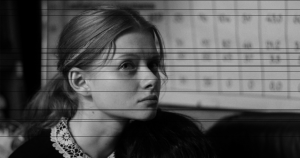
A still from ONE MAN DIES A MILLION TIMES
HtN: So, as I mentioned, I used to be a Russian teacher and I traveled to Russia a lot between 1988 and 1998. But my last trip was in ‘98. When I first went to Leningrad, because it was still Leningrad in ‘88, the town looked like many locations had not been repaired since World War II. This was a legacy of Soviet malaise, etc. By the time I stopped going in ‘98, however, before it became Putin’s Russia, but with the beginning of the rise of the billionaire class now in charge, you were starting to see, both in Moscow and St Petersburg, a lot of these places being repaired. In your film, however, there are quite a lot of locations that look old and not very well-maintained. How hard was it to find those decrepit locations, since my impression was that the repair of the infrastructures, etc., had accelerated under Putin? Plus, St. Petersburg is his hometown. So, what was your location scouting like?
JO: Well, I don’t call it Putin’s Russia. I just call it Russia.
HtN: Well, unfortunately, though, it is.
JO: (laughs) Well, do you call it Trump’s America?
HtN: Well, in some ways, yes. We’ll see what happens.
JO: Oh, God, let’s not talk about that…So, for me, the location scouting was a huge part of the film. Being there in 2010, I had already found a lot of locations that I was interested in going back to. And it’s true: most of them had been repaired and were now glossy and not at all interesting to me. But there was still plenty to choose from. And I had great location scouts where we were able to find a lot of really beautiful and authentic real locations. For me, coming from a documentary background, I wanted as little set decoration as possible. Of course, I had an amazing set decorator – his set design was incredible – but a lot of times we would work in places that didn’t have any electricity and so it was freezing cold. The actors didn’t have to act like it was cold. It was legitimately cold.
HtN: You didn’t have to add their breath digitally…
JO: (laughs) No, no! And that was important to me. I wanted it to feel real, because I think the things that I really dislike about narrative are when it feels false and I’m not interested in that, in that layering of self-reflectivity. I’m really just interested in creating an experience that feels pretty inescapable. In all my films, I think, atmosphere trumps story. So, the atmosphere was really a critical part of it.
HtN: So, casting. What was that like? How did you find those actors?
JO: We had a casting director and Maksim was the first tryout. Immediately I was like, “OK, we got it.” I mean we obviously tried a lot of people but it was pretty clear that he was going to be in it. And then for Alyssa, it took us a long time. We could not find somebody that we really loved. And then the casting director was like, “Look, we have one more girl, but we start shooting next week. So, if this is not the right girl, you just have to pick one of the girls that we’ve already found because we can’t keep going.” And Alyssa came in and totally blew us out of the water with her audition. And we all had goosebumps and cried and we were like, “OK, we’ll go right into fitting. Don’t even leave the building; we’re just hiring you on the spot.”
HtN: She has a good face for the part because it’s angular and you obviously didn’t starve your actors…or maybe you did. (laughs)
JO: No! (laughs)
HtN: And you need them to look like they’re getting hungry, and her face, in particular, I think works well for that.
JO: Yeah. Part of the problem was that we found a lot of actors that we liked, but Russia has a lot of round faces and it’s very hard to make those look starved.
HtN: It is, yeah. You need the high cheekbones. That’s a problem I have in narrative films where people are starving, like in The Hunger Games. Nobody really looks like they’re hungry.
JO: Yeah. And that’s definitely…we talked about putting our actors through hell, but in the end, that wasn’t really what the film was about.
HtN: Yeah, you’re not method acting towards starvation. So, final question: the Vavilov Institute…what is going on there today in – I won’t call it Putin’s Russia –contemporary present-day Russia?
JO: It’s way underfunded, like most scientific institutions the world over. Working there was wonderful because we got to actually work with a lot of the scientists that are still employed there. And they worked with our actors to make sure that what they were doing during the film was actually what the scientists during World War II would have been doing. And it was hard to see that they were so … clearly the place had once been bustling and it no longer is. And it’s hard to see that, to see those things fall apart, but I can’t speak to their finances or their future at this point. I didn’t want the film to be about politics. And I do want there to be something that I can do for them. I want this to raise awareness about what an incredible place that is, but I also am not … this isn’t a fundraising campaign for them as much as I wish it could be. (laughs) I don’t know that it would be an effective one.
HtN: But it’s still active. It still exists. It’s still doing similar work…
JO: Yes, absolutely. And it still is really a repository of priceless, irreplaceable, and totally one-of-the-kind seeds that need to be protected.
HtN: Well, Jessica, thank you so much for talking to me. I really enjoyed the film and I wish you all good things with it.
JO: Thank you!
– Christopher Llewellyn Reed (@ChrisReedFilm)
Like what you see here on Hammer to Nail? Why not pay just $1.00 per month via Patreon to help keep us going?








